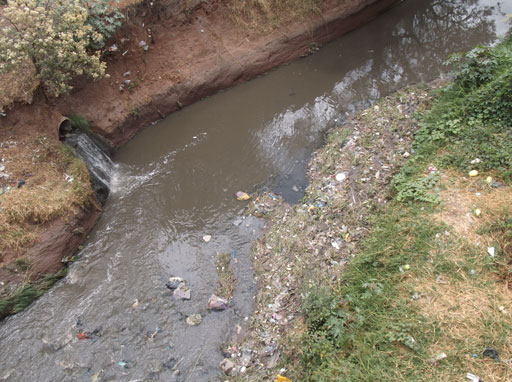Exactly How Liquid Waste Disposal Works: A Comprehensive Introduction of Strategies and Technologies Used

Summary of Liquid Waste Types
The complexity of fluid waste types necessitates a comprehensive understanding of their characteristics and ramifications for disposal. Fluid waste can extensively be categorized right into numerous types, consisting of industrial, metropolitan, agricultural, and harmful waste. Each category displays distinct residential properties, calling for particular administration strategies to minimize environmental and health dangers.
Industrial fluid waste originates from making processes and typically has a range of impurities, such as heavy metals, solvents, and organic compounds. Municipal liquid waste, mostly consisting of wastewater from households and commercial facilities, contains raw material, nutrients, and pathogens (industrial wastewater treatment). Agricultural liquid waste, consisting of runoff from farms, might contain fertilizers, chemicals, and pet waste, posturing threats to water top quality and environments
Hazardous fluid waste is identified by its toxicity, reactivity, or prospective to cause damage. Recognizing these diverse liquid waste kinds is important for developing reliable disposal techniques and ensuring conformity with environmental laws.
Physical Treatment Approaches

Screening is the initial step, where bigger bits and particles are eliminated from the liquid waste utilizing screens or grates. This process secures downstream devices from damage and guarantees smoother operation. Following screening, sedimentation utilizes gravitational pressure to different solids from liquids. In sedimentation tanks, much heavier bits work out near the bottom, creating a sludge layer, while the cleared up fluid can be additional treated.
Purification is one more important method that entails passing the fluid through permeable materials, such as sand or membrane layers, to catch smaller particles. This action boosts the quality of the liquid, making it ideal for subsequent treatment processes.

Chemical Therapy Methods
Chemical therapy techniques are vital for efficiently handling fluid waste, specifically in resolving dissolved and colloidal contaminants that physical techniques may not effectively remove. These methods use different chemical representatives to reduce the effects of, speed up, or change hazardous materials into less damaging types.
One typical technique is coagulation and flocculation, where chemicals such as alum or ferric chloride are contributed to promote the gathering of put on hold fragments. This procedure improves sedimentation, permitting for easier removal of the resulting sludge. Additionally, oxidation processes, using representatives like chlorine or ozone, are utilized to damage down intricate organic substances and microorganisms, making the waste much safer for discharge or additional treatment.
Neutralization is an additional essential method, which adjusts the pH of acidic or alkaline waste streams to neutral levels, protecting against possible damage to downstream systems and the environment. Additionally, advanced oxidation procedures (AOPs) use combinations of oxidants and ultraviolet light to degrade relentless toxins, attaining a higher degree of treatment performance.
Organic Therapy Processes
Organic treatment procedures play a vital duty in the administration of fluid waste by using microorganisms to decay organic issue and minimize impurity levels. These procedures can be broadly categorized right into anaerobic and cardio treatments, each utilizing certain microbial communities to attain effective waste deterioration.
Cardio treatment involves the usage of oxygen to facilitate the malfunction of natural materials by microorganisms. This process is generally implemented in triggered sludge systems, where oygenation storage tanks supply a conducive environment for microbial growth, bring about the oxidation of organic contaminants. The resultant biomass can be separated from treated effluent with sedimentation.
In comparison, anaerobic therapy occurs in the lack of oxygen, go to this site relying upon different germs to damage down raw material. This technique is particularly beneficial for high-strength waste, as it produces biogas, an eco-friendly power resource, while reducing sludge production. Technologies such as anaerobic digesters are frequently employed in community and industrial applications.
Both anaerobic and cardiovascular biological treatments not just minimize the environmental impact of fluid waste but likewise promote source recuperation, making them crucial parts of lasting waste administration methods. Their performance, performance, and versatility sustain their prevalent implementation across various fields.
Arising Technologies in Disposal
Innovative approaches to fluid waste disposal are swiftly advancing, driven by improvements in technology and an increasing focus on sustainability. Among these arising innovations, membrane bioreactors (MBRs) have actually acquired grip for their ability to incorporate biological therapy with membrane learn this here now purification, leading to premium effluent that can be reused in numerous applications. MBRs allow smaller impacts and much more reliable operations contrasted to traditional systems.
An additional promising advancement is using anaerobic digestion incorporated with nutrient recovery innovations, which not just treats fluid waste but also creates biogas and recuperates beneficial nutrients like nitrogen and phosphorus. This dual benefit boosts source efficiency and minimizes ecological impact.
Furthermore, progressed oxidation procedures (AOPs) are being adopted for the deterioration of intricate natural pollutants. These techniques use effective oxidants and stimulants to break down contaminants at the molecular level, using a very reliable solution for challenging waste streams.
Furthermore, the combination of expert system and artificial intelligence in waste administration systems is maximizing functional performance and anticipating maintenance, leading to decreased costs and improved environmental compliance. These modern technologies show a substantial change towards even more reliable and lasting fluid waste disposal methods.
Conclusion
In verdict, efficient fluid waste disposal requires a comprehensive understanding of numerous techniques and modern technologies. By constantly progressing these approaches, it comes to be possible to attend to the growing difficulties linked with liquid waste, inevitably contributing to environmental defense and resource healing.
Fluid waste disposal is an important aspect of environmental monitoring, check this site out requiring a detailed understanding of numerous techniques and innovations customized to various waste types. Liquid waste can extensively be classified into several types, consisting of industrial, community, agricultural, and hazardous waste. Agricultural fluid waste, consisting of drainage from farms, might include plant foods, chemicals, and pet waste, posing risks to water high quality and ecological communities.
Various physical treatment techniques play an important duty in taking care of fluid waste effectively - industrial wastewater treatment.In conclusion, efficient liquid waste disposal demands a thorough understanding of various techniques and technologies